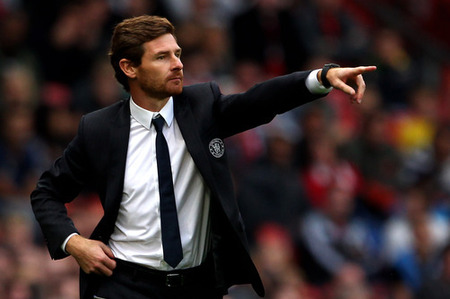 Graham MacAree writes an outstanding tactical match analysis of the recent Chelsea vs. Manchester United match. Click here for the more detailed analysis, and below is his recap of the alignments and systems used by both teams in United's 3-1 victory.
Graham MacAree writes an outstanding tactical match analysis of the recent Chelsea vs. Manchester United match. Click here for the more detailed analysis, and below is his recap of the alignments and systems used by both teams in United's 3-1 victory.From the tactical standpoint, there wasn't much unusual going on, so far as Manchester United are concerned. Sir Alex Ferguson has bucked the tactical trend of late, focusing on wide play and using two banks of four in defence. His 4-4-1-1 has nonetheless been very effective, mostly because the wide players are very good and Wayne Rooney's habit of roaming into the midfield while ostensibly playing as second striker mitigates many of the problems that a two-striker system presents.
Many analysts have pointed to United's shape as the key factor behind their unconvincing performance in Europe, especially against Barcelona, but I would disagree. Going toe to toe vs. Barcelona in central midfield is hubris in the extreme, so one should focus elsewhere. In Ferguson's case, he's targetting the wings whilst unleashing Rooney in the centre for maximum chaos and mayhem.
Unfortunately for United, that choice plus several injury problems have meant that their centre was very vulnerable indeed. When Darren Fletcher, Anderson, Phil Jones and Johnny Evans are essentially the core of a side, that side will be vulnerable down the middle. It was there than Andre Villas-Boas chose to target.
It's unclear just how much truth is in that tweet, but what is certain is that Villas-Boas opted for an extremely open match. Raul Meireles was once more summoned into the holding role, flanked by Ramires and Frank Lampard. Fernando Torres was the man to lead the line, with Juan Mata and Daniel Sturridge on the left and right wing. The only other surprise was that David Luiz was benched in favour of Branislav Ivanovic, although that particular move was almost necessitated by choosing Meireles over Mikel. It was, more or less, the same 4-3-3 that we saw at the Stadium of Light against Sunderland, although Torres was playing higher up the pitch than Nicolas Anelka did against Sunderland.
The formation was designed for a slugging match and to ask questions of a shaky United defence. It did the attacking part of its job, but suffered badly whenever the hosts were on the ball. Meireles did not do an adequate job tracking Rooney, and while John Terry and Ivanovic were nearly perfect in the way they dealt with Javier Hernandez, the wingers gave Chelsea problems throughout, because the fullbacks couldn't support the attack without opening up channels for United to launch long diagonals to their wide players. Nani in particular tore Chelsea apart, dominating a lackadaisical Ashley Cole on our left flank.
Nevertheless, the basic thrust of Villas-Boas' strategy was a success. The fact that Chelsea were down 3-0 at halftime was probably not a fair reflection on the scoreline - the Blues had generated just as many chances as United (although, I suspect, talk of Chelsea outplaying their hosts is exaggerating the matter somewhat). Although the midfield never looked fluid, chances were being generated, and the team looked menacing on the attack.
Obviously, it all went wrong - we'll get into the whys later, but that three goal deficit wasn't entirely luck - and the manager was forced to make changes in the second half, taking off Lampard for Anelka. Lampard had been the most effective midfield player in terms of retaining possession, but hadn't really helped the Chelsea cause on the attack. With a forward coming on for a midfielder, the shape had to change, and the team became a 4-2-1-3, with Ramires dropping back and Mata playing as a trequartista and Anelka taking his spot on the left wing.
Chelsea were slightly (but only slightly) more defensively capable in this new shape, and even more of a threat to score. Torres put the Blues on the board within a minute of the restart and should have scored twice more in the half. United, of course, hit the woodwork twice and missed a penalty, so they certainly weren't having any problems cutting Chelsea's defence open - the formation change didn't improve Cole's or Bosingwa's fortunes one bit.
At the end of the day, the chosen shape represented a very bold gamble. The attackers, by and large, did their jobs. The defence did not, and that is why Chelsea lost.






No comments:
Post a Comment